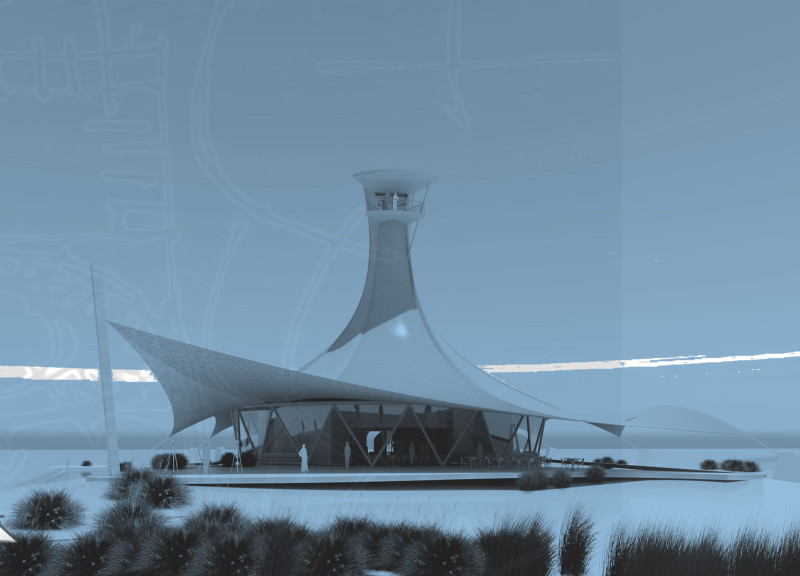5 key facts about this project
The main function of the Visitor Centre is to provide a comprehensive hub for information about the flamingos and their habitat. The architectural design supports various activities, including exhibitions, educational programs, and communal events. The layout is organized to allow for seamless visitor flow, promoting interaction with the informative displays and multimedia presentations that highlight the significance of the wetland environment.
Sustainable design practices are uniquely integrated throughout the building. The architectural approach features a tensile roof structure constructed from a PTFE translucent membrane, which allows diffused natural light to illuminate the interior spaces while moderating temperature. This design choice not only reduces energy consumption but also creates an inviting atmosphere for visitors.
The use of laminated timber for structural elements demonstrates another thoughtful architectural choice. This material is not only aesthetically pleasing but also provides strength and durability essential for the building's longevity. Additionally, rammed earth walls are incorporated to enhance thermal performance, ensuring that the interior spaces remain comfortable in the desert climate.
The overall form of the project is inspired by the wings of flamingos, resulting in a fluid architectural silhouette that contrasts with traditional static building shapes. This design reflects the movement and grace of the natural inhabitants of the area, emphasizing a harmonious relationship between architecture and its environment.
The Visitor Centre also includes strategically placed reflective water ponds that play a role in climate control while enhancing the site's ecological value. These ponds support biodiversity and provide a natural habitat for various species, further integrating the facility into the surrounding landscape.
The Abu Dhabi Flamingos Visitor Centre stands out due to its innovative combination of cultural references and modern sustainability practices. The project effectively bridges collective heritage and advanced design methodologies, creating an impactful structure that serves as a resource for both education and conservation.
For those interested in architectural details, reviewing the architectural plans, sections, designs, and ideas will provide deeper insights into the project's various components and its overall strategic vision. Exploring these elements can enhance appreciation for the careful thought and artistic expression embedded in the design.






















